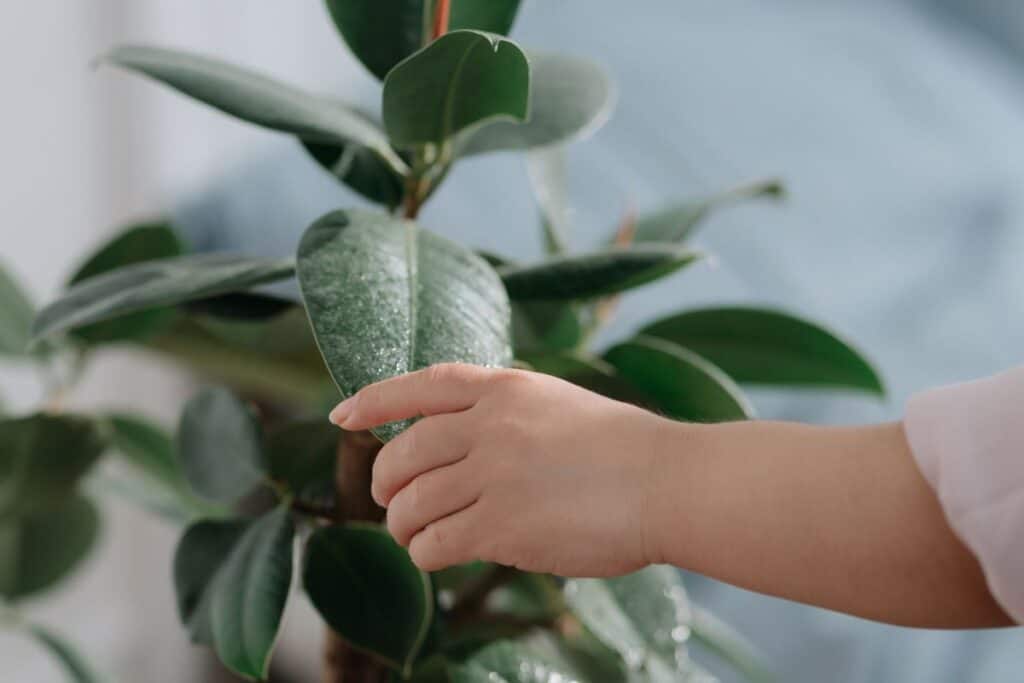If you’ve ever hovered over your plant wondering, “Do you need water or are you just being dramatic?”—you’re not alone. Overwatering and underwatering are the top causes of plant stress, and guessing wrong can lead to yellow leaves, root rot, or crispy edges. But good news: there’s a foolproof way to know exactly when your plant needs a drink—and it doesn’t involve psychic powers or moisture meters. Let’s break it down.

🌿 The Finger Test: Your Built-In Moisture Meter
This method is so simple, it feels almost too good to be true. But trust us—it works.
How to do it:
- Stick your finger about 1–2 inches into the soil (knuckle-deep).
- Feel for moisture.
- If the soil feels dry: Time to water.
- If it feels cool or damp: Hold off—your plant’s good for now.
Why it works:
Most houseplants absorb water from their root zone, which is usually 1–2 inches below the surface. Surface soil can dry out faster, especially in warm rooms, but that doesn’t mean the roots are thirsty yet. The finger test checks where it matters.
🪴 What Dry Soil Actually Feels Like
Not sure what “dry” means? Here’s a quick guide:
|
Soil Texture |
What It Means |
What to Do |
|---|---|---|
|
Dry, crumbly, and light |
Thirsty roots |
Water thoroughly |
|
Cool, slightly moist |
Happy roots |
Wait a few days |
|
Wet, sticky, or compacted |
Overwatered |
Let it dry out |
Bonus tip: If soil sticks to your finger like brownie batter, it’s too wet. If it brushes off like flour, it’s dry.
🌞 Other Clues Your Plant Might Be Thirsty
While the finger test is your go-to, these visual signs can back it up:
- Drooping leaves (especially in pothos or calathea)
- Leaf curl or crispy edges
- Soil pulling away from the pot edges
- Lighter-colored soil
Just remember: some plants droop when thirsty and when overwatered. That’s why checking the soil is key.
🚫 What Not to Rely On
Let’s bust a few myths:
- Leaf color alone: Yellow leaves can mean too much water, not too little.
- Pot weight: Helpful for pros, but tricky for beginners.
- Watering schedules: Your plant doesn’t care what day it is—it cares how dry the soil is.
💡 Pro Tip: Bottom Watering for Thirsty Plants
If your plant’s soil is super dry and water runs right through, try bottom watering:
- Fill a bowl or sink with water.
- Place the pot (with drainage holes) in the water.
- Let it soak for 15–30 minutes.
- Remove and let excess water drain.
This helps rehydrate the root zone without overwatering the topsoil.
🌱 Final Thoughts: Trust Your Finger, Not Your Calendar
Every plant, pot, and room is different. The easiest way to avoid watering mistakes? Skip the guesswork and use your finger. It’s fast, free, and surprisingly accurate.
So next time your Marble Queen or Calathea gives you side-eye, just poke the soil and say, “I got you.”
